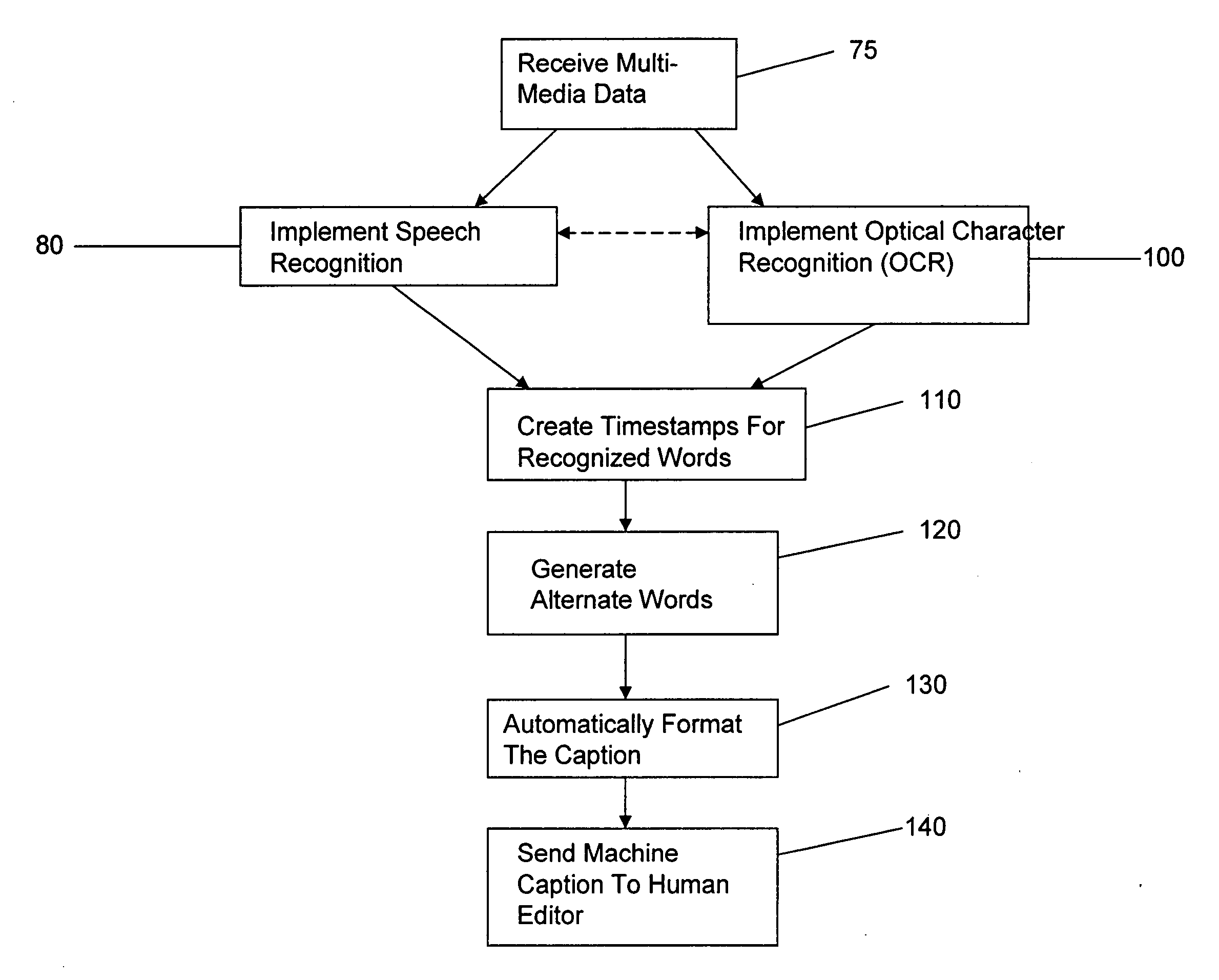Method, system, and apparatus for facilitating captioning of multi-media content
- Summary
- Abstract
- Description
- Claims
- Application Information
AI Technical Summary
Benefits of technology
Problems solved by technology
Method used
Image
Examples
Embodiment Construction
[0025]FIG. 1 illustrates an overview of an enhanced multi-media captioning system. An automatic captioning engine 20 can create a machine caption based on a multi-media data 10 input. The multi-media data 10 can be audio data, video data, or any combination thereof. The multi-media data 10 can also include still image data, multi-media / graphical file formats (e.g. Microsoft PowerPoint files, Macromedia Flash), and “correlated” text information (e.g. text extracted from a textbook related to the subject matter of a particular lecture). The automatic captioning engine 20 can use multiple technologies to ensure that the machine caption is optimal. These technologies include, but are not limited to, general speech recognition, field-specific speech recognition, speaker-specific speech recognition, timestamping algorithms, and optical character recognition. In one embodiment, the automatic captioning engine 20 can also create metadata for use in making captions searchable. In an alternat...
PUM
 Login to View More
Login to View More Abstract
Description
Claims
Application Information
 Login to View More
Login to View More - R&D
- Intellectual Property
- Life Sciences
- Materials
- Tech Scout
- Unparalleled Data Quality
- Higher Quality Content
- 60% Fewer Hallucinations
Browse by: Latest US Patents, China's latest patents, Technical Efficacy Thesaurus, Application Domain, Technology Topic, Popular Technical Reports.
© 2025 PatSnap. All rights reserved.Legal|Privacy policy|Modern Slavery Act Transparency Statement|Sitemap|About US| Contact US: help@patsnap.com



